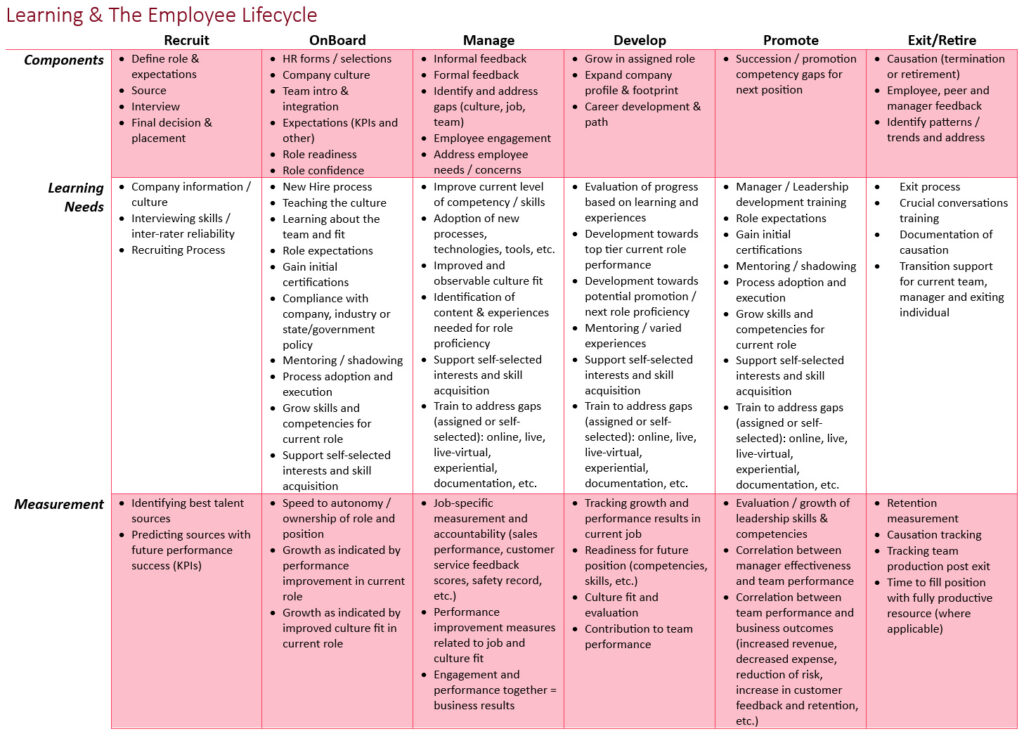Establishing a seamless foundation for an effective learning organization involves applying these four statements to every stage of the Employee Lifecycle: recruitment, onboarding, management, development, promotion, and exit/retirement.This integration is crucial for driving overall business growth and improvement. Let’s look at these one by one:
Learning Does Not Operate in a Vacuum
Once you move past compliancy and required minimal training activities, you begin to focus on actual behavioral change. When behavior changes, you have the ability to observe and measure results, leading to performance improvement (hopefully) and, by definition, learning has just bled into performance or talent management, career pathing, salary and bonus payments, etc. Learning may be the catalyst, but its impact is far reaching.
Learning is an Essential Part of Change Management
To remain successful, companies, their teams, the roles and the people in them are in a constant state of change. After all, if something isn’t constantly changing, then by definition, it is dying or already dead. The paradox here is that few of us love change. So, we need training, enablement, support and encouragement to help us not only embrace the change, but to prepare for it and equip ourselves to successfully execute it once it is here. Change Management without learning as a key enabling factor is doomed to fail.
What Gets Measured, Gets Done
There is a basic “math” equation I like to use in this instance: Here is our business today. Add in the “change.” What is different? Business + Change = ??? Learning should result in measured behavioral change (hopefully for the better!). Improved individual behaviors will equal better team performance, which, in turn, will lead to measurable business results (increased revenue, reduced cost, higher customer satisfaction and/or retention, removal of risk, etc.). The key is tying learning to the anticipated business result BEFORE you implement the change. In this way, you can track it, determining if the change did what you thought (or hoped!) it would.
Learning is Most Effective in the “Moment of Need”
Research clearly shows that when there is need – and the more urgent and significant the need, the greater the imperative – full adoption and expression of learning is more frequent and more impactful as measured by performance improvement. The opposite is also true – learning without an urgent need or triggering event is often lost fairly quickly and may never be applied to actual job performance. There is an inverse relationship between when the learning takes place and the timing of its application; the longer the interval, the weaker the impact of the learning event. So, how do we measure learning when it happens in the moment of need? The key here is the right combination of quantitative (factual numbers, outcomes and measurable results) and qualitative (observed behaviors, team interactions, peer, customer and manager feedback) data to paint the right picture. Only looking at one of these can lead you to missing the mark on the true impact of learning or the intended change.
Taking the above foundational concepts and applying them to the Employee Lifecycle, here are some ways you can apply and measure learning at every stage:


